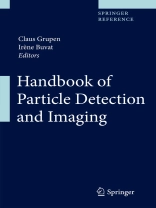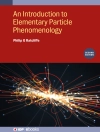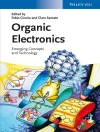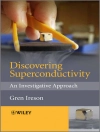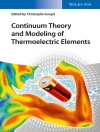The handbook centers on detection techniques in the field of particle physics, medical imaging and related subjects. It is structured into three parts. The first one is dealing with basic ideas of particle detectors, followed by applications of these devices in high energy physics and other fields. In the last part the large field of medical imaging using similar detection techniques is described. The different chapters of the book are written by world experts in their field. Clear instructions on the detection techniques and principles in terms of relevant operation parameters for scientists and graduate students are given.Detailed tables and diagrams will make this a very useful handbook for the application of these techniques in many different fields like physics, medicine, biology and other areas of natural science.
Tabella dei contenuti
VOLUME 1:- PART 1: BASIC PRINCIPLES OF DETECTORS AND ACCELERATORS. – Interactions of Particles and Radiation with Matter.- Electronics Part I.- Electronics Part II.- Data Analysis.- Statistics.-.- Accelerators for Particle Physics.- Synchrotron Radiation and FEL Instrumentation.- Calibration of Radioactive Sources.- Radiation Protection.- PART 2: SPECIFIC TYPES OF DETECTORS.- Gaseous Detectors.- Tracking Detectors.- Photon Detectors.- Neutrino Detectors.- Scintillation Counters.- Semiconductor Counters.- Gamma-Ray Detectors.- Cherenkov Counters.- Muon Spectrometers.- Calorimeters.- New Solid State Detectors.- Radiation Damage Effects.VOLUME 2:- PART 3: APPLICATIONS OF DETECTORS IN PARTICLE AND ASTROPARTICLE PHYSICS, SECURITY, ENVIRONMENT AND ART.- Astrophysics and Space Instrumentation.- Indirect Detection of Cosmic Rays.- Technology for Border Security.- Accelerator Mass Spectrometry and its Applications in Archaeology, Geology and Environmental Research.- Geoscientific Applications of Particle Detection and Imaging Techniques with Special Focus on the Monitoring Clay Mineral Reactions.- Particle Detectors Used in Isotope Ratio Mass Spectrometry, with Applications in Geology, Environmental Science and Nuclear Forensics.- Particle Detectors in Materials Science.- Spallation–Neutrons Beyond Nuclear Fission.- Neutron Detection.- Instrumentation for Nuclear Fusion.- The Use of Neutron Technology in Archaeological and Cultural Heritage Research.- Radiation Detectors and Art.- Part 4: APPLICATIONS OF PARTICLE DETECTORS IN MEDICINE.- Radiation-Based Medical Imaging Techniques: An Overview.- CT Imaging: Basics and New Trends.- SPECT Imaging: Basics and New Trends.- PET Imaging: Basics and New Trends.- Image Reconstruction.- Motion Compensation in Emission Tomography.- Quantitative Image Analysis in Tomography.- Compartmental Modeling in Emission Tomography.- Evaluation and Image Quality in Radiation-Based Medical Imaging.- Simulation of Medical Imaging Systems: Emission and Transmission Tomography.- High-Resolution and Animal Imaging Instrumentation and Techniques.- Imaging Instrumentation and Techniques for Precision Radiotherapy.- Tumor Therapy with Ion Beams.
Circa l’autore
Claus Grupen, Universität Siegen born: September 19th, 1941 in Timmendorfer Strand, Germany Studies of mathematics and physics at the University of Kiel, Germany; degree of a high school teacher in 1966, Ph.D. in physics with research work on ’Electromagnetic Interactions of Cosmic Ray Muons’, University of Kiel 1970, Visiting Fellow of the Royal Society of England, University of Durham. Cooperation with Sir Arnold Wolfendale (later Astronomer Royal) on cosmic ray physics (1971/1972). Spokesperson of a cosmic ray experiment (muon spectra, charge ratio and interactions of muons) at DESY, Hamburg 1972 – 1973. Habilitation at the University of Siegen in physics with a thesis on ’Electromagnetic Interactions of High Energy Cosmic Ray Muons’ (1975) Radiation Officer at Siegen University since 1975; Honorary consultant for the Siegen fire brigade in matters of ’Radiation Safety’ since 1990 Member of the PLUTO-experiment at DESY working on DORIS and PETRA (1974 – 1987) on Electron-Positron Interactions Supernumerary professor of physics at Siegen University since 1978; full professor at Siegen since 1981. Special High Energy and Particle Physics Prize of the European Physical Society for the Discovery of the Gluon in 1979; awarded in 1995 (jointly with members of the JADE, Mark J, PLUTO and TASSO Collaborations) Dean of the physics department at Siegen University 1980/81; 1991 – 1993; and 2002 – 2006. Visiting professor at the University of Tokyo 1981 and 1985, doing cosmic ray work with Prof. Dr. Takashi Kitamura. Member of the ALEPH-Experiment (Electron-Positron Interactions at the world largest e+e− Collider LEP) at CERN (1984 – now). Member of the Cosmo ALEPH-Experiment (Underground muon physics with the ALEPH detector at CERN; 1990 – now). Member of the KASCADE-Grande and LOPES experiments at the Forschungszentrum Karlsruhe (KIT – Karlsruhe Institute of Technology; 2005 – now) Paid Associate at CERN 1990; 1994, and 2000 working on ALEPH. Director of the ’Research Institute for Humanities and Social Science’ at Siegen University 1999 – 2001 retired: September 30, 2006 Irene Buvat, born July 21, 1966 1988 “Magistère Interuniversitaire de Physique”, cum laude Bachelor of Physics cum laude Ecole Normale Supérieure ULM Paris, France 1989 Graduated in Nuclear Physics, cum laude, Paris XI University, Orsay, France 1992 Ph D in Nuclear Physics: “Scatter correction in scintigraphy” cum laude, Paris XI University, Orsay, France 1992 200 credit hours in Biology 1989-1992 Research fellow with Robert Di Paola, U66 INSERM, Institut Gustave Roussy, Villejuif, France 1993-1994 Research fellow with Andrew Todd-Pokropek, Department of Medical Physics and Bio-engineering, University College London, UK 1995-1996 Research fellow with Stephen Bacharach, Department of Nuclear Medicine, National Institutes of Health, Bethesda, MD 1996-2001 Research Scientist CNRS (Centre National de la Recherche Scientifique), INSERM Laboratory of Functional Imaging, Paris 2002-2005 Research Scientist CNRS (Centre National de la Recherche Scientifique), INSERM Laboratory of Functional Imaging, Paris, Head of the “Quantitative imaging of radiotracers” research group 2006-2007 Director of Research CNRS (Centre National de la Recherche Scientifique), INSERM Laboratory of Functional Imaging, Paris, Head of the “Quantitative imaging of radiotracers” research group 2008-now Director of Research CNRS (Centre National de la Recherche Scientifique), CNRS Laboratory of “Imaging and Modeling in Neurobiology and Cancerology”, Orsay, France, Head of the “Quantitative molecular imaging” research group AWARDS 2009 Rotblat medal awarded by the Editorial Board of “Physics in Medicine and Biology” for the citations prize to the authors of the original research paper that has received the most citations in the preceding five years (according to the Institute for Scientific Information). Awarded article: GATE: a simulation toolkit for PET and SPECT, Jan et al, Phys. Med. Biol. 49 4543–61, 2004. 2002 Bronze medal awarded by the CNRS for outstanding accomplishments in medical imaging
